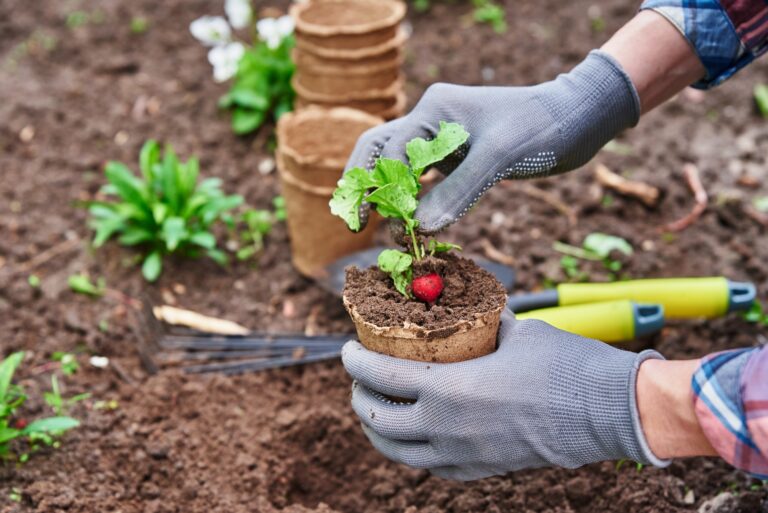Transform Your Backyard: Creating an Eco-Friendly Garden
How can you make your garden more sustainable and wildlife-friendly?
Creating an eco-friendly garden is not only beneficial for the environment but also provides a peaceful and sustainable haven for wildlife. By implementing simple practices, you can ensure that your garden is both beautiful and environmentally conscious. This article will provide you with practical ideas on how to make your garden more sustainable, from planting successional blooms to using natural pest control methods. With these tips, you can transform your backyard into an eco-friendly paradise.
Sustainable Garden Ideas
Having an eco-friendly approach to gardening means putting nature at the forefront of your practices. By incorporating sustainable techniques into your garden, you can minimize waste, conserve resources, and support biodiversity. Below are some easy and effective sustainable garden ideas that you can adopt to make your backyard greener:
Plant Successional Blooms
A key element of good garden planning is ensuring there are successional blooms throughout the year. This practice not only adds beauty to your garden but also provides a continuous food source for pollinators such as bees and butterflies. Consider planting a variety of flowers and crops that bloom at different times so that there is always something in bloom.
And then, plant ornamental flowers alongside vegetables to naturally attract beneficial insects that help control pests. Research companion planting techniques to find out which plants work well together and provide mutual benefits.
Improve Soil Quality
Healthy soil is essential for the overall health of plants and the ecosystem in your garden. Improve soil quality by adding organic matter such as compost or mulch. This helps retain moisture, improve drainage, and provide nutrients to plants’ roots.
Consider using peat-free compost as it is more environmentally friendly than traditional peat-based composts. Peat extraction destroys valuable habitats and releases carbon dioxide into the atmosphere when disturbed.
Embrace Natural Pest Control
Avoid using synthetic pesticides in your garden as they harm beneficial insects like bees, butterflies, and ladybugs along with other wildlife. Instead, opt for organic pest control methods such as companion planting, which involves planting certain plants together to repel pests naturally.
Introduce beneficial insects like ladybugs and lacewings, which feed on garden pests. Use physical barriers such as nets or row covers to protect your plants from pests without using harmful chemicals.
Conserve Water
Water is a precious resource, and conserving it in the garden is essential. Collect rainwater in barrels or tanks to use for watering your plants. This not only reduces water consumption but also saves you money on your water bill.
Avoid overwatering by using proper watering techniques. Water deeply but less frequently to encourage plant roots to grow deeper and become more resilient to drought conditions. Mulching around plants helps retain moisture in the soil and reduces evaporation.
Attract Wildlife
Creating a sustainable garden means welcoming wildlife into your space and providing them with food, shelter, and water sources. Plant native flowers that attract bees, butterflies, and other pollinators. Opt for varieties that bloom at different times throughout the year to ensure a continuous food supply for these important creatures.
Install bird feeders or nesting boxes to provide food and shelter for birds in your garden. Consider incorporating features such as ponds or small water sources where birds can drink and bathe.
How can you make your garden more sustainable and wildlife-friendly?
- Plant successional blooms throughout the year to provide a continuous food source for pollinators.
- Improve soil quality by adding organic matter such as compost or mulch.
- Avoid using synthetic pesticides and opt for natural pest control methods like companion planting.
- Conserve water by collecting rainwater and using proper watering techniques.
- Attract wildlife by planting native flowers, installing bird feeders, and providing water sources.
- Remember that gardening is an ongoing process of learning and adapting.
- Keep exploring new ideas and staying informed about sustainable practices in order to make a positive impact on the environment.
To Wrap
By implementing these sustainable gardening practices, you can create an eco-friendly haven for yourself and wildlife in your backyard. Embracing natural pest control methods, improving soil quality, conserving water, attracting wildlife, and choosing native plants are all crucial steps towards creating a sustainable garden that benefits both you and the environment.
Remember that gardening is an ongoing process of learning and adapting. Keep exploring new ideas, staying informed about sustainable practices, and enjoying the beauty of nature in your own backyard. With dedication and creativity, you can make a positive impact on the environment while creating a stunning eco-friendly garden retreat.

So start embracing these sustainable gardening ideas today and watch your garden flourish with life and beauty. Happy gardening!
—mewaste.comAdditional Resources
- A Comprehensive Guide To Designing An Eco Friendly Garden
- 13 Ways To Create An Eco Friendly Garden Real Homes
- Sustainable Gardens 10 Ideas For An Eco Friendly Space

